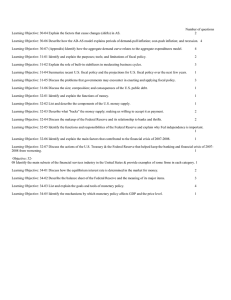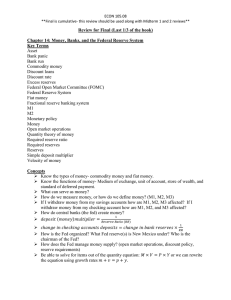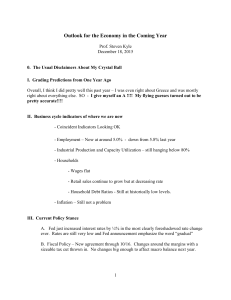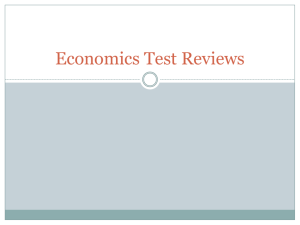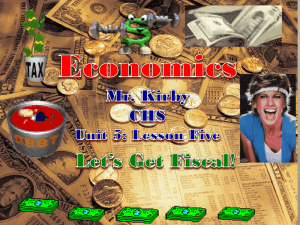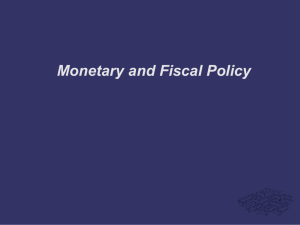The role of government in a market economy
advertisement
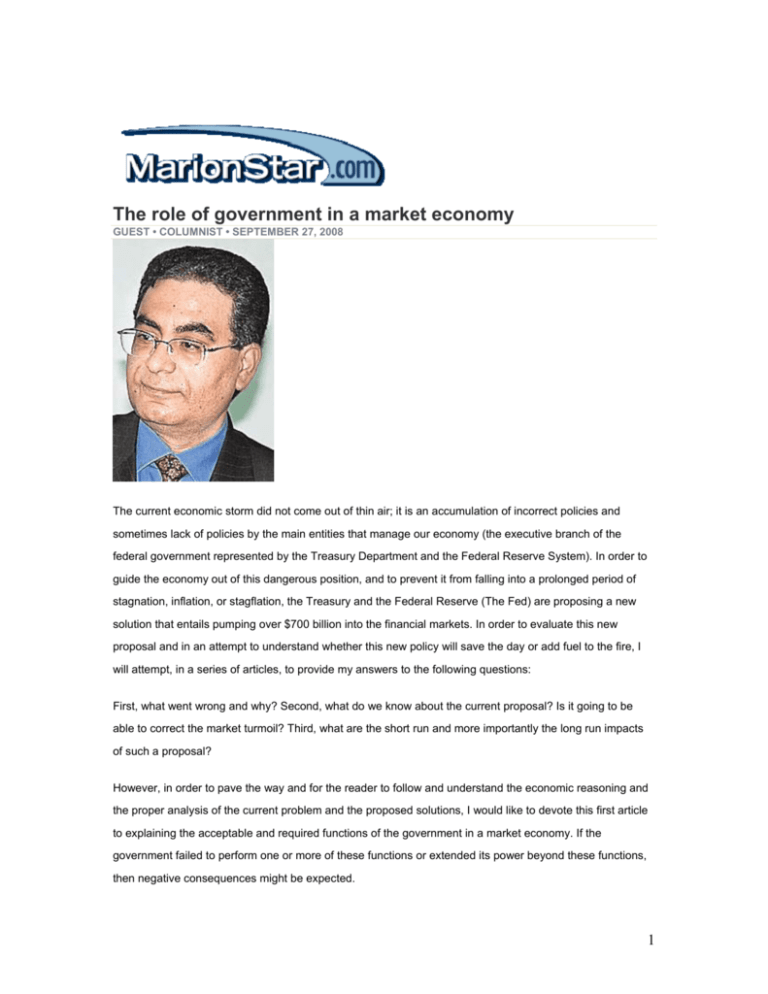
The role of government in a market economy GUEST • COLUMNIST • SEPTEMBER 27, 2008 The current economic storm did not come out of thin air; it is an accumulation of incorrect policies and sometimes lack of policies by the main entities that manage our economy (the executive branch of the federal government represented by the Treasury Department and the Federal Reserve System). In order to guide the economy out of this dangerous position, and to prevent it from falling into a prolonged period of stagnation, inflation, or stagflation, the Treasury and the Federal Reserve (The Fed) are proposing a new solution that entails pumping over $700 billion into the financial markets. In order to evaluate this new proposal and in an attempt to understand whether this new policy will save the day or add fuel to the fire, I will attempt, in a series of articles, to provide my answers to the following questions: First, what went wrong and why? Second, what do we know about the current proposal? Is it going to be able to correct the market turmoil? Third, what are the short run and more importantly the long run impacts of such a proposal? However, in order to pave the way and for the reader to follow and understand the economic reasoning and the proper analysis of the current problem and the proposed solutions, I would like to devote this first article to explaining the acceptable and required functions of the government in a market economy. If the government failed to perform one or more of these functions or extended its power beyond these functions, then negative consequences might be expected. 1 The consensus in the economic literature, with regard to the role of the government in a market economy, calls upon the government to perform five functions. These functions are: 1. Providing the economy with a legal structure: This is the first and most important function a government should provide and without it an economy may collapse. This function requires the government to ensure property rights, provide enforcement of contracts, act as a referee and impose penalties for foul play. In order to perform this function, the government should furnish the economy with regulations, legislations, and means that ensure product quality, define ownership rights and enforce contracts. Our legal system, the FDA, The FED and SEC are examples of how the government fulfills this task. 2. Maintaining competition: Since competition is the optimal and efficient market mechanism that encourages producers and resource suppliers to respond to price signals and consumer sovereignty, the government should fight monopoly power and non-competitive behavior. Thus, anti-monopoly laws (Sherman Act of 1890; Clayton Act of 1913) are designed to regulate business behavior and promote competition. It is important to mention here that Microsoft was found guilty of violating these laws in 2000. 3. Redistribution of income: The government should strive to provide relief to the poor, dependent, handicapped, and unemployed. Welfare, Social Security and Medicare programs are examples of programs that support the poor, sick and elderly. These programs are built on transferring income from the high income groups to the limited income ones, through progressive taxes. Other means of redistribution might include price support programs such as the farm subsidy and low interest loans to students based on their family incomes. 4. Provision of public and quasi-public goods: When the markets fail to provide the needed goods or the correct amounts of certain goods or services, the government fills in the vacuum. Examples of public goods that the markets do not provide are defense, security, police protection and the judicial system. Education and health services are examples of quasi-public (merit) goods that the market does not provide enough of. The government should provide the first, and help in the provision of the second. 5. Promoting growth and stability: The government (assisted by the Fed) should promote macroeconomic growth and stability (increasing the GDP, fighting inflation and unemployment) through changes in its fiscal and monetary policies. The fiscal policies means the use of taxes and spending and it is managed by the executive branch represented mainly by the Treasury Department. The monetary policies signifies the use of interest rates, money supply, reserve requirements, etc. and it is managed by the Federal Reserve System. Going over these tasks and functions, and examining what was going on in the U.S. economy in general, and the financial markets in particular, for the last ten years, the reader may get a sense of which tasks the government neglected to perform partially or completely. Also, in which functions the government expanded 2 its power beyond the call of duties and in explicit conflict with the principles of the free market system. We will revisit these issues later, however; our next article will focus on the answers to the questions "what went wrong and why?" Hassan Y. Aly is a professor of economics at The Ohio State University at Marion. 3


